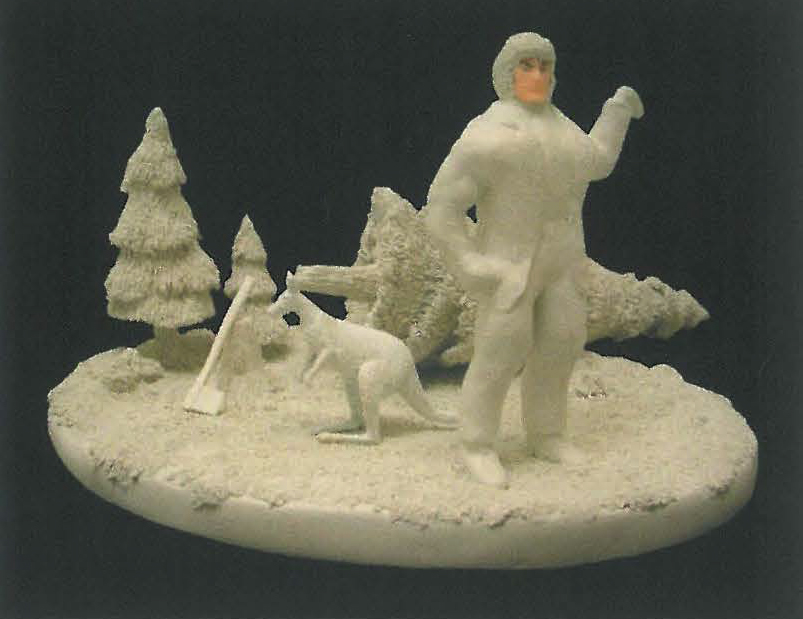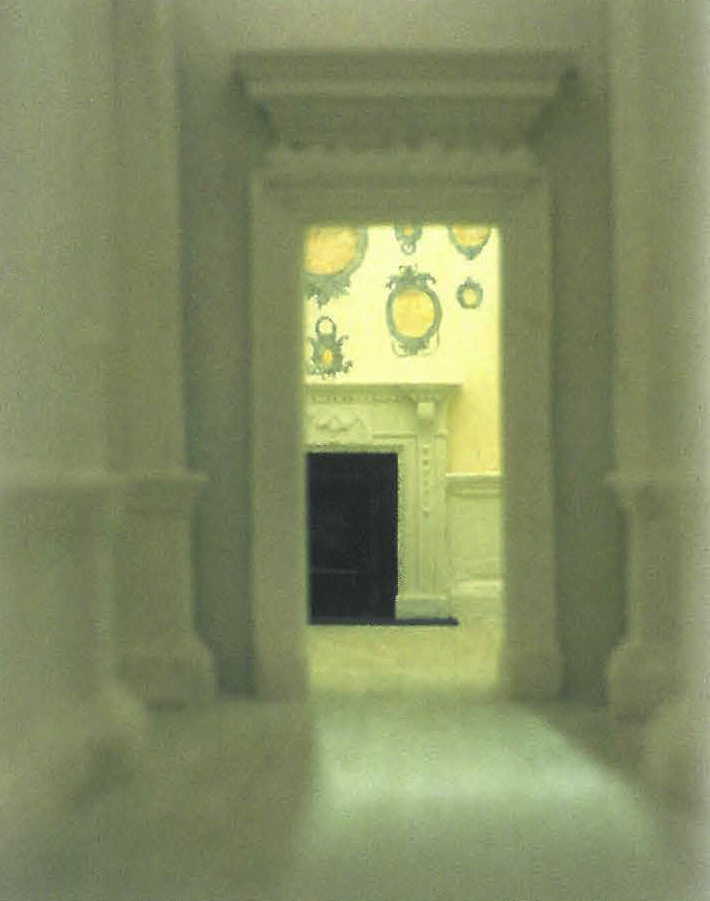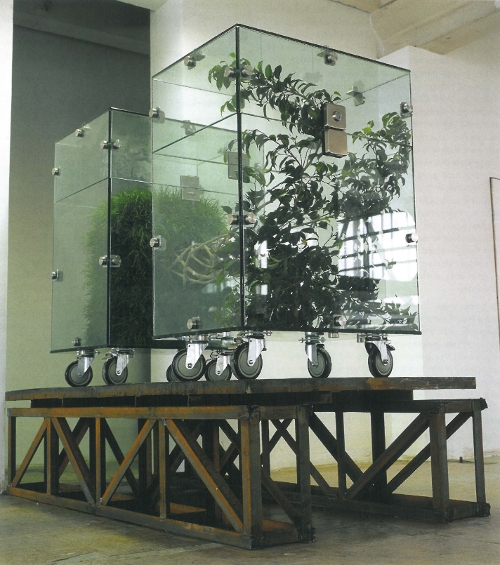
There is a strangely satisfying irony in the notion of something being so vast that it can only be illustrated through a small-scale model. The stock in trade of filmmakers, science boffins and toy manufacturers, models are portals to worlds and spaces that would otherwise be confined to our imaginations. modelling space presents the alternative universes of four artists who explore the possibilities of the maquette.
Ruth Johnstone plays Jonathan Swift in her three Reconstructions from the lost race of Lilliputians. A doorway in a featureless plaster box transports the viewer into an 18th century print room, meticulously recreated in plaster and marble dust. A palatial corridor leads to a well-lit (courtesy of a strategically placed spotlight) room. Through the internal doorway we spy an elaborate fireplace and wall hung with miniature Johnstone's, all perfectly to scale. The effect is genuinely delightful, as we are transformed into instant Gullivers, and left to consider the effect of scale on perspective.
Cornices, architraves, garlanded doorways, multi-panelled windows, dados, skirting boards, and other architectural decorations are painstakingly rendered and even the miniature floorboards have an incised grain. Johnstone is particularly intrigued by the reconstruction as a façade, a fakery, and lavishes equal attention on the plywood panels, wooden beams and un-rendered plaster that support the impeccably reproduced wall on the other side. A hidden door leads into an interior construction site, while another façade has its back to the viewer, who must negotiate a narrow gap between the work and the wall in order to see the crumbling ruins of the face, with all the whiteness of antiquity.
White is also conspicuous in the work of Glen Walls, although in this instance Modernity, and particularly Modern architecture, is the muse. With the aid of DAS modelling clay, Walls transforms action figures into architects with big white suits (in the style of Talking Heads) and even bigger white hair. Engaged in acts of buffoonery they wander through snow-covered landscapes in search of Glass Houses, encountering astronauts, girls in hotpants, kangaroos, and giant polar bears along the way. Walls is obviously parodying the architectural practice of model making, although in these instances the homes have blended into the landscape just a little too seamlessly; the International Style icon is nowhere to be found. Philip Johnson was very proud of his garden, but where did the Glass House go? A single street-light illuminates Johnson's quandary, while a woman in a Soviet grey suit searches equally vainly in She knew she had built her International Style house somewhere here, but where?

Walls also has fun with architectural rivalries, in both Bill hated the way John referred to him as trailer trash, after all he was an architect of some standing and 'O.K. Mies, come fuck me', yelled Philip (Philip Johnson's black framed Glass House is heavily indebted to Mies van der Rohe's white framed Farnsworth House, which was designed first, but built later). Johnson is bending over, lifting his coat tails high to expose his rump in invitation. The clumsy inconsistencies in scale are reminiscent of kitsch 60s television series like Land of the Giants - the ultimate act of insolence against the Modernist priests of High Taste.
As opposed to selecting specific architectural icons of the past, Lisa Young creates shining plastic metropolises for the future, creating time-travellers of the viewer. The geometric Habitat 2 glistens with pristine clear Perspex, stacked in super slick towers of ellipses, circles and hexagons. The subterranean roads, railways and immaculate sewerage pipes glow with fluorescent orange against a navy blue base.
Acrylux Inn provides a colourful counterpoint to the minimalist palette that dominates the rest of modelling space. Pinks, aquas, lime greens, cobalt blues, yellows and silvers swirl in organic layers, strongly reminiscent of marbled paper rendered in three dimensions. Young has created escapist utopias, simultaneously nostalgic and futuristic, unpolluted and unpopulated.
John Waller's animated green sphere enlarging and contracting to the sound of breathing seems at odds with the rest of the exhibition; at least this reviewer was unable to make the connection. For the most part however, curator Joy Hirst has selected artists who embrace the technical challenges of working in miniature, and who are able to exploit the model's potential to transport the viewer to alternative worlds and times.












